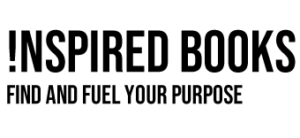HABIT STACKING
Time is precious as we all know. There are more and more distractions and competing agendas in our lives.
One method I have found to be incredibly powerful over the last few years is that of habit stacking. I was aware of the concept before, having read numerous books on habits, such as The Power of Habit by Charles Duhigg, High Performance Habits by Brendon Burchard, and Atomic Habits by James Clear, but I had not applied the theory, or realised the parallel with marginal gains.
The theory of habit stacking is that it is easier to adopt a new habit by adding it to an existing one, than by trying to create a new discrete one altogether. For example, I wanted to introduce stretching because I wasn’t getting around to it first thing in the morning, so I added it straight after my daily workout during lockdown with a much higher success rate than the first attempt.
Marginal gains are all the small improvements that can compound over time to enable a breakthrough in performance or a significant shift in productivity. In isolation, marginal gains can seem almost irrelevant but in combination and compounded over time, they can add up to a massive gain!
An example of habit-stacking in a project environment is holding an After Action Review (AAR) for the current operational section immediately after an Advance Planning Meeting (APM) for the forthcoming operation. Whilst there are perceived downsides (longer meeting and reviewed section not necessarily finished yet), the upside is that there is one meeting rather than two to complete two critical events for success and learning. I have seen this implemented by a few teams when they were struggling to get people around the table for AARs and the ‘stacking’ increased the occurrence of team reviews by 75%.
With annual re-focus a priority for me at this time of year, there have been a number of personal habit-stacking initiatives I have recently implemented for myself:
- Miracle morning practice template used through Microsoft Outlook from the start of the day to ensure it retains and redraws my attention. This essentially includes the SAVERS acronym-items as developed by Hal Elrod in his book Miracle Morning: Silence, Affirmation, Visualisation, Exercise, Read, Scribe (journal). I was not getting around to these good practices, but ‘stacked’ alongside a necessary clearing of emails every morning, it ensures I get these personal-growth rituals done.
- Audiobook in the car when driving to the gym, the shops, or to collect the kids. Reading time is often the first to be compromised by a busy schedule. However, the advent of audiobooks has provided the wonderful opportunity to listen to a narrated book while progressing on the critical path of daily life.
- LinkedIn articles written to give back, to give information, to give inspiration, and to build awareness of a value proposition. Writing an article or blog post feels like journaling, and clarifying understanding, when completed with a sense of purpose and a sense of passion. Stacking together the importance of giving back, with the importance of communication and reflection, the right work and personal habits can be rolled together to achieve more across the board with like-minded people.
- Muscle activation, mobilisation and stretching, which itself is added to the daily walk or workout! This is as much about habit-stacking as it is about increased awareness of the symbiosis between body and mind, and between health and happiness. Exercise is so important for a sense of progress and wellness that physical training should be seen as non-negotiable in order to realise our human potential.
Often, the excuse for not doing better is the perceived lack of time. There is no doubt that time management is a major challenge. Arnold Schwarzenegger talks about “sleeping faster” as a way to make more time.
For me this quote is the best I’ve come across:
“Personal and professional improvement is one of the best time savers we have.” – Brian Tracy
Our personal and professional method for optimal growth is worth improving all the time. The beginning of the year is often a natural point for pause. Think about habit stacking as a way to achieve a little more this year.



